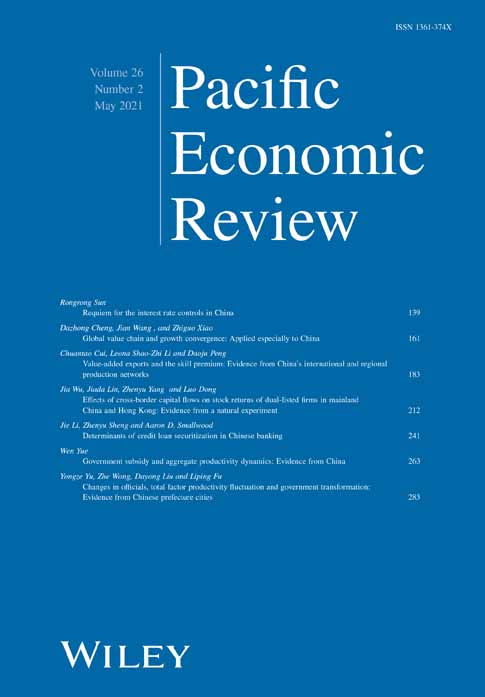Value-added exports and the skill premium: Evidence from China’s international and regional production networks
This project is supported by the National Natural Science Foundation of China (No. 71803206, 71603172). Chuantao Cui gratefully acknowledges research funding from Sichuan University (20822041A4206). Daoju Peng gratefully acknowledges funding from the Research and Innovation Center of Metropolis Economic and Social Development, Capital University of Economics and Business.
Funding information: National Natural Science Foundation of China, Grant/Award Numbers: 71803206, 71603172
Abstract
The present study examines the impact of value-added exports on the skill premium in a large developing country. We distinguish two margins of value-added trade: direct exporting measures the economic activities of de jure exporters, while indirect exporting reflects the induced demand for suppliers for exporters. We integrate China’1s internal and external production networks and draw empirical evidence from both population and economic censuses. Our findings show that aggregate value-added export intensity is associated with a higher skill premium, but it encompasses two contrasting effects: the direct exporting channel increases the skill premium, whereas the indirect channel decreases it. The latter channel has been neglected in existing published studies, which can lead to an overestimation of the positive relationship between exports and inequality in the South. We discuss the possible mechanisms and important implications.




